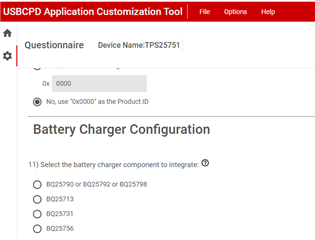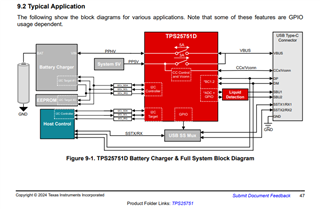Other Parts Discussed in Thread: BQ25638,
Tool/software:
Hi,
we want to use the TPS25751D PD Controller and the BQ25638 Battery Charger for a Battery Device with USB-C PD for Battery charging and with OTG support to drive external devices.
We have some questions:
1. It looks like the BQ25638 does all the power path and current management by itself, so we dont really understand the usage of the powerpath fets in the controller, shouldnt it be possible to connect the BQ25638 VBUS directly to the USB-C Connector?
2. We dont want to use an extra Buck-Boost converter for 5V, because we dont need them on our Board. If our understanding is correct, the BQ25638 outputs in OTG Mode 5V to VBUS, how do we have to connect the BQ25638 and the TPS25751? Is it possible to just connect BQ25638 VBUS to TPS25752 PPHV and leave PP5V open?
So for Sink Mode the Connection is clear:

But for Source Mode we are nott shure, PPHV should be capable of driving the 5V to the USB-C Connector, but why do we need the PP5V then and how we have to connect it?
I hope you can help us, thank you very much!
BR



